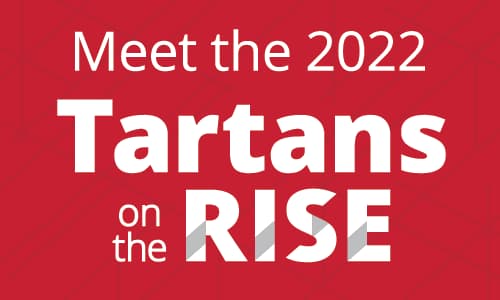Sam Ventura, Vice President of Hockey Strategy and Research, Buffalo Sabres
Heating Up Hockey Analytics
“Moneyball” is a good place to start when learning how data scientist Sam Ventura (MCS 2010; DC 2011, 2015) uses hockey statistics to improve outcomes for the NHL’s Buffalo Sabres. But compared to baseball, hockey really is a totally different game.
Just a few seconds is enough time for a hockey player to go from defending their net to scoring on the opponent, with dozens of data points that quantify the goal.
“Hockey is an inherently chaotic sport where there's so much happening at once and at such a high speed that it is challenging to quantify the impact of individual plays or players,” Sam says. “So much data flows into our systems that it requires a tremendous amount of effort to build out a system for analyzing player and team performance.”
As a result, hockey has been slow to adopt data science.
“But once you build out that system, it scales, and you can quickly analyze almost every hockey player playing in leagues around the world.”
That’s where Sam shines and what landed him a spot with the Pittsburgh Penguins. As a graduate student in the Department of Statistics & Data Science, he started working with hockey data online as a side project related to his favorite sport. The Pittsburgh Penguins took notice and brought him on board as a consultant while he was still finishing his doctorate in statistics at CMU. He joined the team full time after playing a role in their back-to-back Stanley Cup championships in 2016 and 2017, eventually moving to the front office as director of hockey operations and hockey research.
The Buffalo Sabres acquired him in 2021, and Sam now leads their data science team as the vice president of hockey strategy and research. His analysis informs player evaluation, team performance, trades and the draft — and anything else that helps the team win games. He’s also leveraging tools such as computer vision and RFID tracking to quantify what happens on the ice at each moment in time.
“It’s exciting for someone with my background to try to use that information to gain competitive advantages and, ultimately, to win more hockey games,” he says.
Story by Elizabeth Speed
